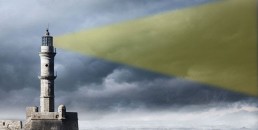 In this next installment of the iUniverse author, John C. Woodcock’s blog series he starts to describe the emerging writing form or genre of his latest book, UR-image.
In this next installment of the iUniverse author, John C. Woodcock’s blog series he starts to describe the emerging writing form or genre of his latest book, UR-image.
“One of the significant category breakdowns that is relevant to my articulating the “genre” of writing that this book is concerned with is that of the pair of opposites: doing and reflection. Within our modern structure of consciousness we consider these a pair of opposites. We can do something in life or reflect on something in life but not both at the same time.
In the kind of writing I am suggesting it seems that both happen simultaneously or something else happens that subsumes both within itself. I call this “happening” participation.
Participation with the background process of category breakdown is reflection and doing, yet neither. Thus, participation can be sharply distinguished from automatic writing where the writer’s consciousness plays no part. It is also different from having an experience and subsequently writing about that experience from memory. The writing that emerges from this participatory process therefore is a form (it’s probably too early to call it a genre) that embodies such category break downs (inner-outer, past-present-future, action-reflection, etc.)”
Crazy Writers
“To this extent such writing will appear crazy, as writers of this emerging form are forced to express mind-bending notions that are faithful to the phenomenon yet incoherent when subjected to the requirements of our stable modern form of consciousness.
I recently saw an example of such “nonsense” when I was awake, late at night, unable to sleep. I was being besieged by these and other crazy thoughts. I turned on the TV and to my surprise saw a re-run of Terminator (1984). The heroine (Sarah) and her rescuer are being chased by the Terminator and are resting in a tunnel where she seeks to understand the logic of what is happening. The machines had sent a Terminator back through time to kill her so that she cannot give birth to the hero and then train him in warfare to save future humanity from the machines. The mere presence of this future machine forces this simple waitress to gain the very skills that the machines fear, and to become pregnant. Her rescuer had been arrested and a forensic psychologist listened to his story of travel from the future. He declared the prisoner completely delusional. The heroine, however, is willing to listen as he talked, not of futures, but possible futures. From their point of view, now in the Present, they were confronted with possible futures and their actions mattered, although they could not predict the outcome (whether Sarah would be killed or not). It seems from this and other like examples that the idea of possible futures intersecting with the Present and demanding action, without knowing the outcome, becomes important only when the usual categories that support present-day consciousness break down.”
 Keep reading to Part 7 of this iUniverse Blog series, as John continues to articulate this new writing form and provides further examples. To learn more about John, his books and his thinking, visit his website. To see all of his books visit the iUniverse Bookstore.
Keep reading to Part 7 of this iUniverse Blog series, as John continues to articulate this new writing form and provides further examples. To learn more about John, his books and his thinking, visit his website. To see all of his books visit the iUniverse Bookstore.
Related posts:
Contrary to what many might think, the average reader searches for books by genre, and the best-sell...
iUniverse publishing has been taking a look at what we might expect in 2013 and we found that it...
Ken Stichter tells us about his new mystery-thriller Trail of Madness, featuring detective Van Vanar...

